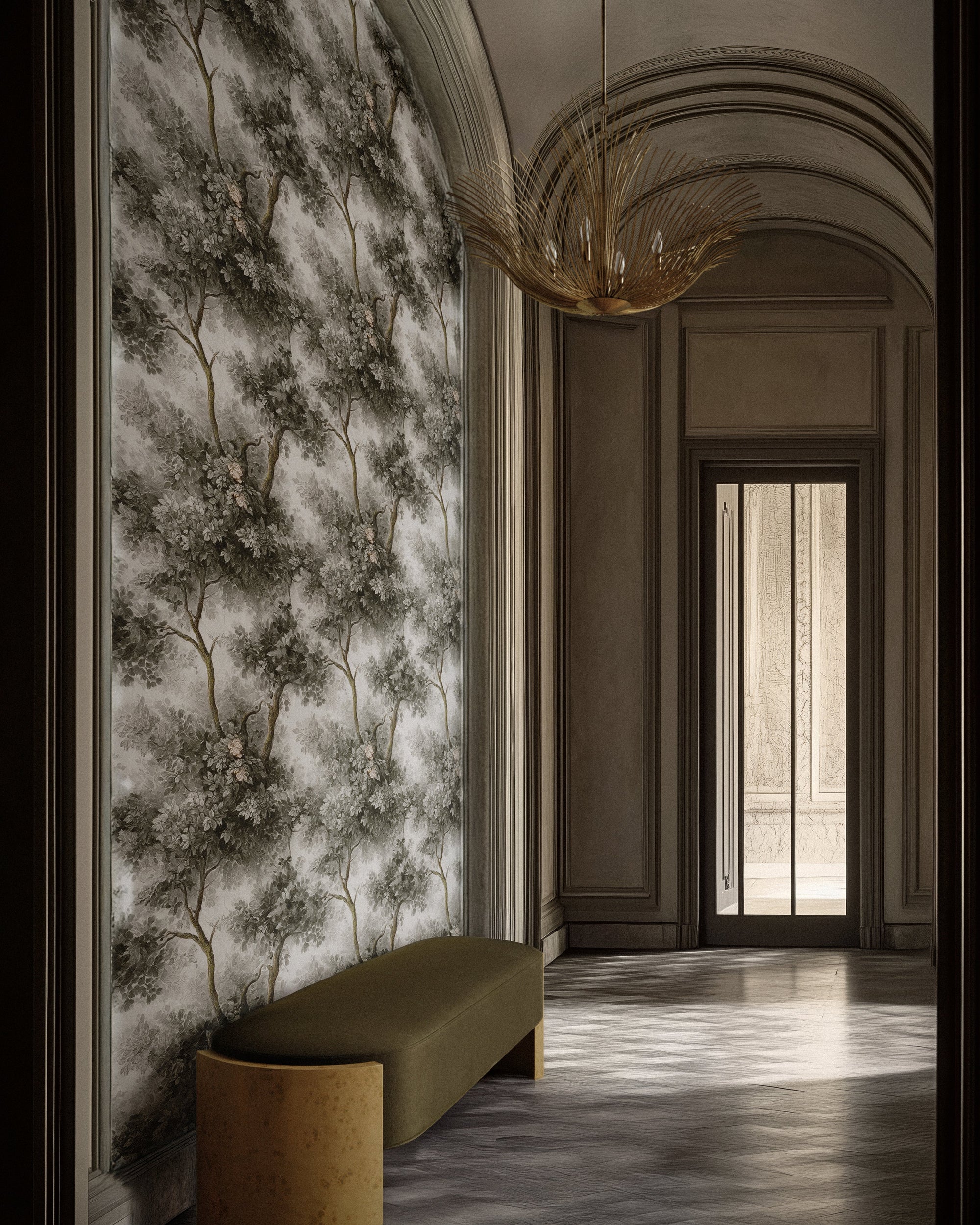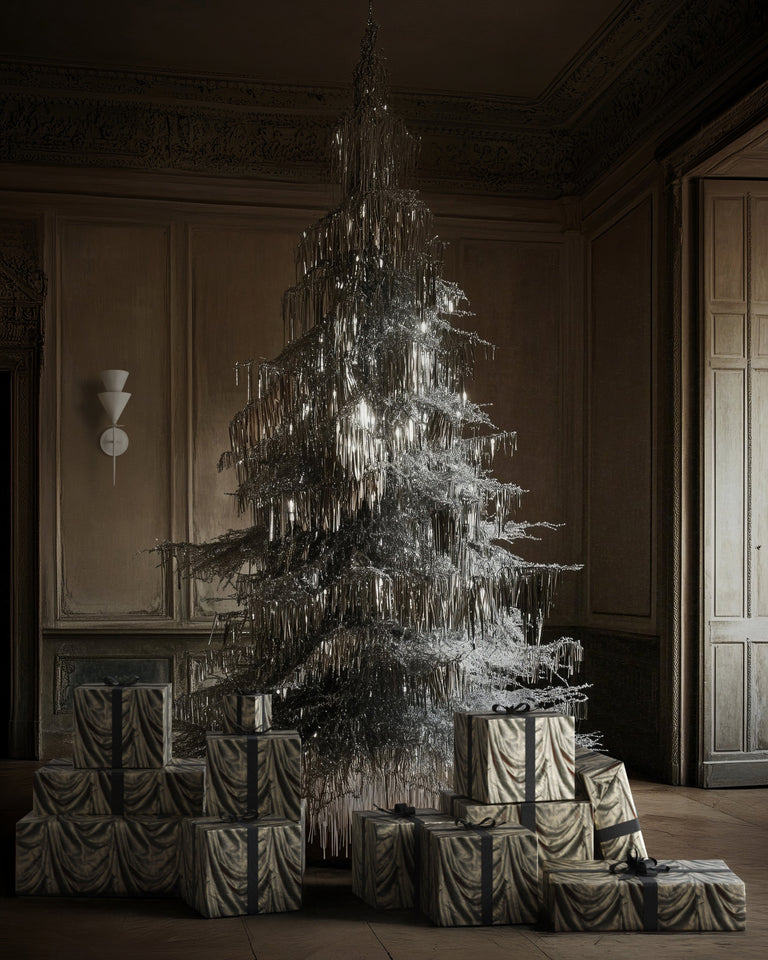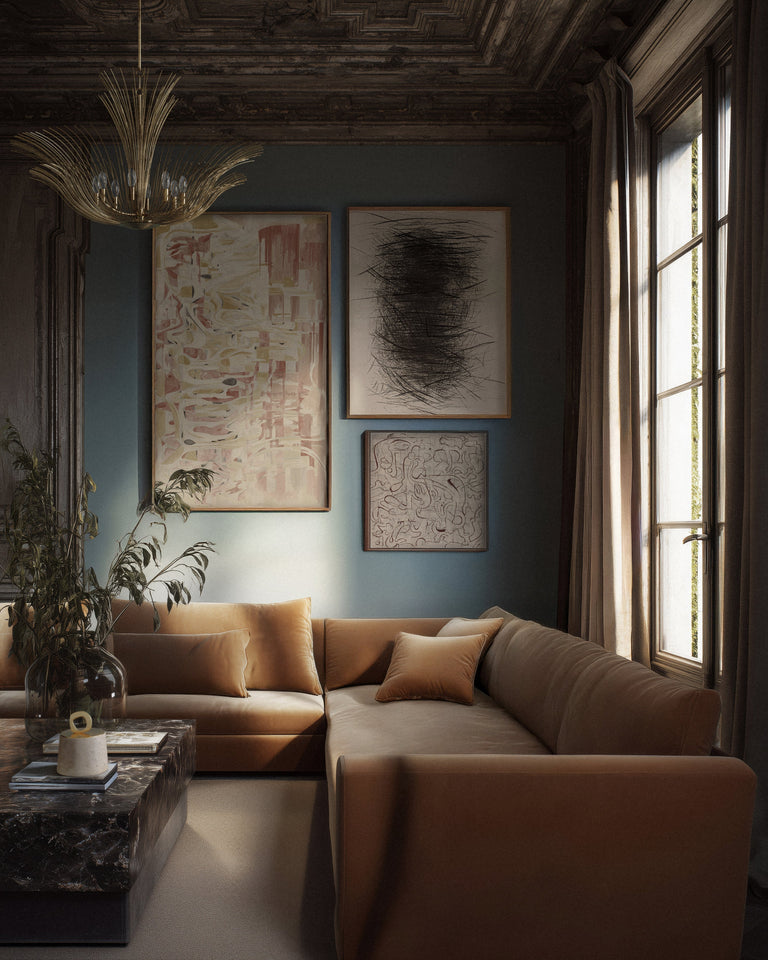
Beyond Decoration: Why Chinoiserie Wallpaper Still Matters
Let's discuss walls, not as background but as character, as the room's opening line. Chinoiserie wallpaper has been doing this since the late 17th century, when the first hand-painted Chinese wallpaper panels arrived in European markets and rewired the Western imagination. What began as trade goods became a visual language: stylized nature, invented architecture, and mythical creatures set in motion. Europe didn't just want to look at China; it wanted to live inside its own dream of it.
The term chinoiserie (from the French chinois, meaning "Chinese") describes an idea that's less about accuracy and more about artistic imagination. European artisans took motifs from Asian-inspired wallpaper, particularly East Asian and Chinese decorative arts, and filtered them through the Rococo lens: asymmetry, whimsy, and a certain decorative audacity.

Fresco Floral wallpaper Lemieux et Cie
The result was rooms that felt like inhabitable dreams. By the mid-18th century, entire salons were wrapped from floor to ceiling in hand-painted panels depicting gardens that never existed, rendered in perspectives that defied logic but somehow made perfect visual sense. This wasn't wallpaper as we typically think of it: repeating patterns stamped onto rolls. These were bespoke narrative surfaces, custom-painted manuscripts of flora and fauna that turned walls into portals. The craft was painstaking. The effect was transcendent.

Ciel Bleu Wallpaper Lemieux et Cie
What Makes It Work (Then and Now)
Chinoiserie operates on multiple planes: literal and metaphorical.
It literally adds dimension. Layers of branches, blossoms, and distant pavilions draw the eye in, not across. Light hits the surface at different angles throughout the day, revealing details you've walked past for months.
Metaphorically, it layers cultures, time periods, and design philosophies. It's East refracted through West, 18th-century craft meeting contemporary space, ornament in conversation with restraint. This is why modern chinoiserie wallpaper works: it's already a hybrid, already a conversation rather than a declaration.
Pauline de Rothschild understood this instinctively. Her Paris apartment featured 18th-century panels with a jade garden dense with birds and intertwining branches, but she surrounded them with almost austere simplicity. She paired them with parquet floors, clean lines, and furniture that knew when to retreat. The chinoiserie mural became the room's protagonist. One designer noted that the space appeared simple precisely because the walls were so layered and complete.

Image courtesy of the Condé Nast Archives, Photo by Horst P Horst 1969.
From Obsession to Evolution
What began as luxury became modern craft. Historically, chinoiserie was hand-painted on silk or rice paper. Today, technology offers a new artistry: chinoiserie peel-and-stick wallpaper preserves intricacy while eliminating cost and installation barriers. It is not compromise; it is evolution.
Modern interpretations honor the same symbols but with an expanded palette and flexible forms:
- Pink chinoiserie wallpaper brings romantic softness to nurseries or powder rooms
- Green chinoiserie wallpaper grounds studies and libraries in botanical form
- Blue chinoiserie wallpaper lends bedrooms and entrances a tranquil depth
- Blue and white chinoiserie wallpaper remains an enduring classic that is airy, balanced, and impossibly timeless
The palette has grown without losing its roots.
 Folie Floral Wallpaper Lemieux et Cie
Folie Floral Wallpaper Lemieux et Cie
Why It Endures
Chinoiserie offers something rare in a flat world: visual generosity. It gives you something to look at, not in an overwhelming, maximalist way, but with the confidence of centuries of people finding beauty in complexity. Once broadly referred to as oriental wallpaper, chinoiserie now represents a more nuanced, artistic interpretation: less geography, more imagination.
The motifs: birds mid-flight, blossoms on impossible branches, pagodas glimpsed through mist — operate outside trends because they operate outside time. They are stylized enough to feel decorative rather than literal, detailed enough to reward sustained attention. They create what designers call visual interest, but what we might call delight.
There is also something profoundly contemporary about embracing the decorative for its own sake. For too long, interiors have been held hostage by the idea that everything must be "functional," or "minimal," or "timeless" in the most boring possible way. Chinoiserie says, "What if your walls told a story? What if they had something to say?"

Vine Flora Wallpaper Lemieux et Cie
The Missing Layer
If this resonates, it is because you already sense what walls can do. Spaces are emotional before they are aesthetic; they gather memory and mood.
So consider this: what if what is missing is not more furniture or a new color, but depth itself? What if your walls could complete the room, not just contain it?
Chinoiserie, historic, hybrid, and newly accessible, offers depth. It gives you layers of time, craft, and story in every glance.
Your walls are blank. Let them tell a story worth stepping into.

Peacock Plume wallpaper Lemieux et Cie
Recent Edits



